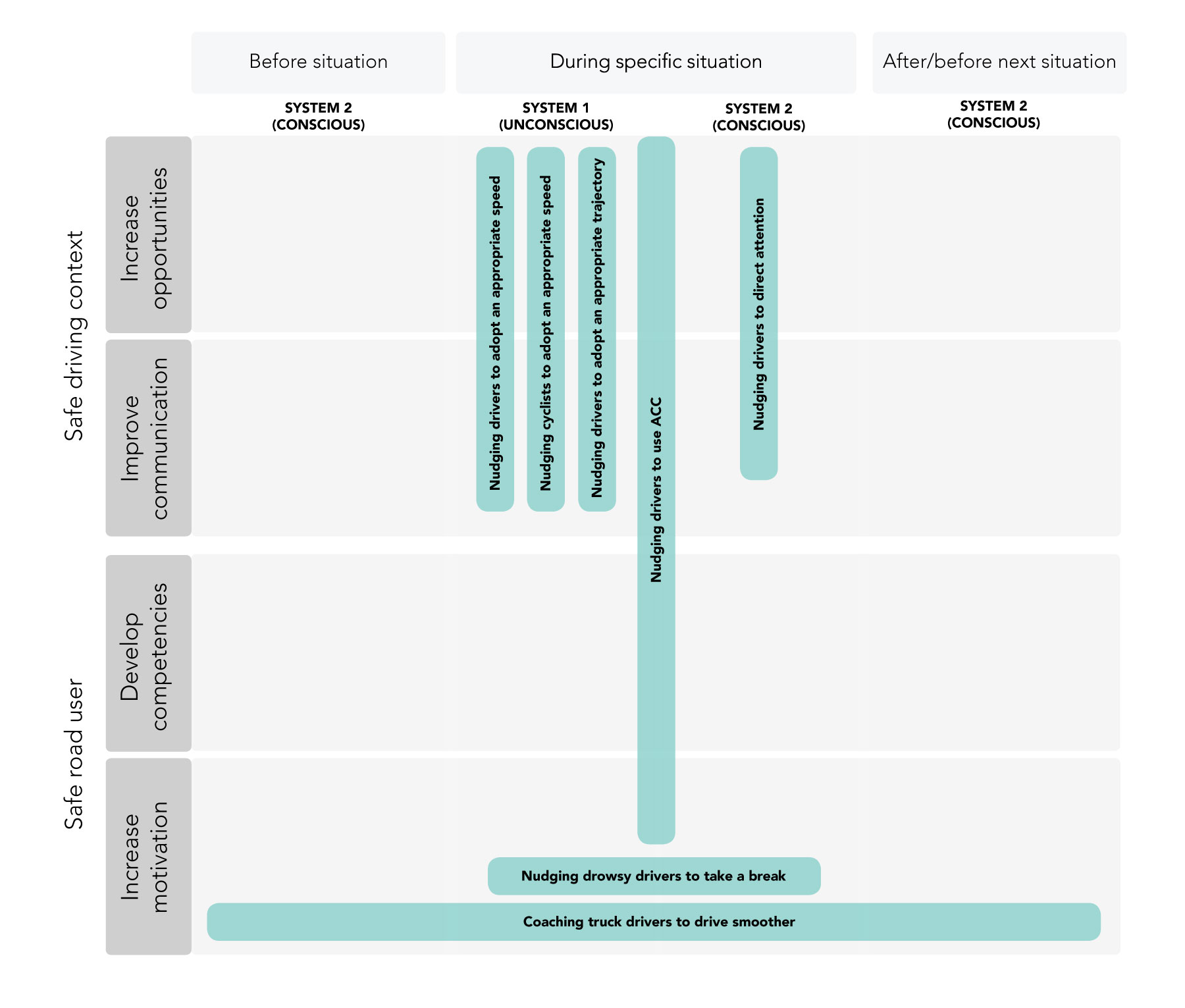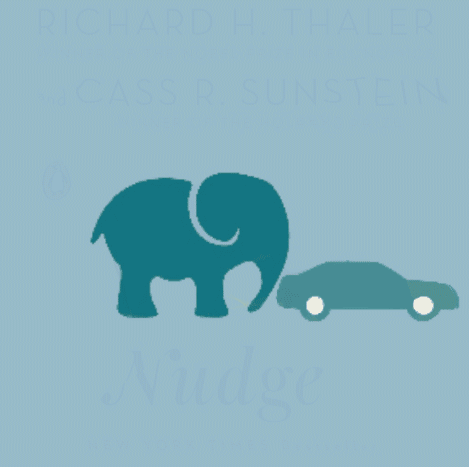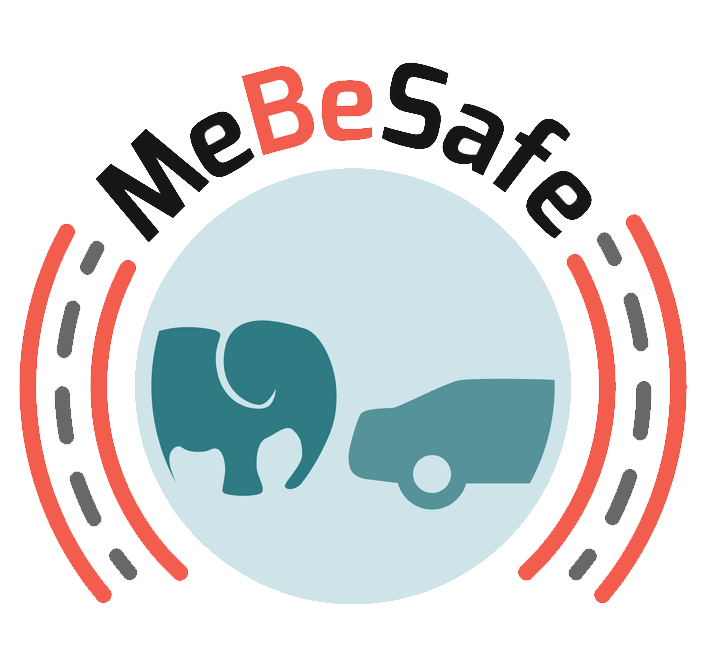MeBeSafe’s guide on how to make traffic safer
with nudging and coaching
If you want to go out and develop a nudge yourself, it requires you to know what a nudge is. Before MeBeSafe, nudging was largely enclosed within economic settings, making it necessary for the MeBeSafe project to create a framework adapted to a traffic-safety setting. And the framework is now readily available for anyone to learn and develop upon.
Originally an economic concept, nudging is about influencing the behaviour of people while requiring as little cognitive effort as possible on their part. You are without a doubt familiar with how certain products (e.g. candy) are placed closer to the cashiers in grocery stores. This makes it more likely for you to buy these products as you are about to exit, but you are however not forced to do it. This particular case is called a sludge – as candy might not be good for your health. If we instead place healthier options (e.g. fruit) it becomes a nudge.
Within these market settings, one would argue that behavioural influence is well defined and widely used. In a traffic-safety setting, it is however not – at least not intentionally (see page 11). The purpose of the MeBeSafe project has therefore been to evaluate the feasibility of soft measures – like nudging and coaching – in the context of traffic-safety. It is however not an easy feat. For one, it’s necessary to redefine the purpose of nudging. MariAnne Karlsson, senior researcher in design and human factors at Chalmers University of Technology and a main figure in the development of the framework, explains.

“Our biggest challenge, and now accomplishment, was to define what nudging is when we are speaking of traffic safety. There are cases where nudging has been adapted to different contexts, but they were about completely different things than traffic safety” MariAnne Karlsson states. “There was quite little to build on except the general nudging theory, but our framework is definitely something I think that can benefit other traffic safety researchers and solution makers.”
Nudging can influence people’s behaviour in a predictable way without forbidding any options. This predictability is highly attractive in a traffic-safety context, as predictability is what infrastructure is mainly intended to accomplish. For example traffic lights to increase the anticipation of each other’s actions, and road markings and signs to inform what kind of vehicles are expected and actions are allowed. MeBeSafe consequently adapted nudging to entail decisions that increase safety for both yourself and others.
The finalized MeBeSafe framework consists of several tables that support a nudge-designer to find an appropriate approach to deal with a traffic problem of their choice. It does not provide straightforward specifications, as that would be impractical; Although a specific nudge design works in one kind of situation, it doesn’t necessarily work in another kind. A crude example of this is the actual ”nudge” per se; you can nudge someone on their back so they will not get hit by a falling object, but if you nudge on their back on the top of a staircase, that person will certainly risk having an accident. Same nudge, but different situations.
The framework supports you step-by-step in finding out what aspect of three tactics you should approach your selected traffic safety problem with (see table below). Firstly, the measure should either trigger a conscious or unconscious decision. Is the traffic safety problem an unintentional error or intentional violation? The former could be exemplified by a habitual speeding behaviour that you as a driver are unconscious of, and the framework then suggests creating a nudge that triggers an unconscious decision that supports the driver in overcoming habitual speeding.

Secondly, the measure should enable safer road users by increasing their abilities or enable safer road context by altering the infrastructure. The questions here are whether road users are able and willing to adopt a safe driving behaviour, or the driving context is supporting road users to adopt a safe driving behaviour. The latter could imply a poorly designed crossing where accidents occur regularly and would suggest a redesign that lessens this occurrence.
Thirdly, there’s a need to determine whether the measure should be implemented prior to, during, or after a specific dangerous situation. Nudges can address behaviour at the specific traffic situation. Coaching, although not nudging, has been integrated into the framework to address behaviour related to a traffic problem prior to, during or after an event.

Lastly, the framework suggests plenty of intervention strategies (e.g. “Simplify information to reduce the driver’s cognitive burden in a specific situation”) which you are instructed to combine into an intervention concept. It’s good to remember that any traffic safety problem can be addressed from multiple angles and that the framework supports in finding a solution and not the solution.
“Our framework provides intervention strategies, and questions that systematically lead you to a better approach,” MariAnne Karlsson explains. “Since exact specifications are unrealistic, we stress that it’s necessary to ask these questions and then reason yourself forward based on your answers.”

The power of nudging specifically is that it can influence the decision-making of individuals and groups as effectively – or more – than instructions, legislation, or enforcement. As with everything, more research is necessary to further develop an understanding of how to better adapt soft measures like nudging to make traffic safer.
The many examples of soft measures produced by MeBeSafe will work as a good foundation. In essence, what this means is that traffic is intently designed in order to create the predictability that enables road users to naturally make better decisions for themselves and others.
The framework is readily available at the MeBeSafe website (bit.ly/MeBeFramework) with a smaller quick guide here (bit.ly/NudgeFramework)
DID YOU KNOW?
If you’ve ever pondered why the MeBeSafe logo is an elephant behind a car, the answer lies in the cover of the book Nudge by Richard H. Thaler and Cass R. Sunstein, which introduced nudging. The cover refers to how elephant mothers are nudging their calf in front of them, so they go in the right direction. Respectively, MeBeSafe want road users to go in the safer direction.

